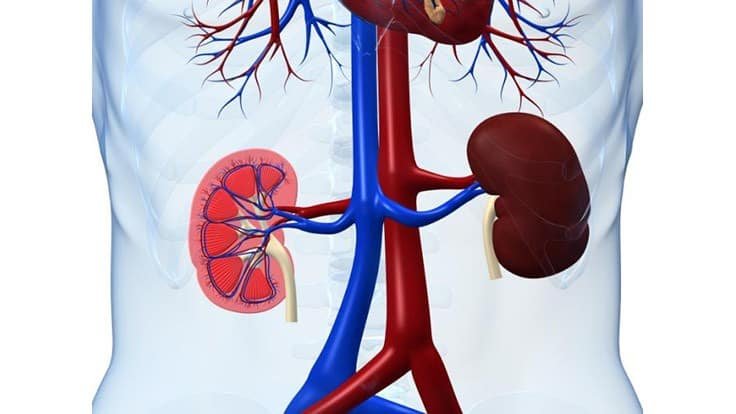Different Types of Kidney Stones, Its Symptoms, and Treatments
When too much of certain minerals accumulate in your urine, when your urine becomes more concentrated, and when you feel dehydrated, it is most likely kidney stones.
In simple terms, Kidney Stones are hard masses or collections made up of crystals (Calcium Oxalate, Calcium phosphate, Uric Acid, Struvite, Cystine, CAP, COAX, and UA), found especially in kidneys. However, they can also be found in different parts of the urinary tract that includes kidneys, ureters, bladder, and urethra.
It is a painful kidney problem, most commonly found in men across the world. People who are obese or suffering from diabetes have very high chances of getting stones in their kidneys. It is so because their kidneys do not work with the best of their potential.
Kidney stones are movable objects. This means they can travel from kidneys to other parts of the urinary tract in the human body.
Kidney stones vary in size, depending on the types of stones and the total period of origination. Some stones are as small as a pea and can be easily removed without medications. While others can be as big that need to be removed through surgery only.
Before we discuss potential solutions to kidney stones, let’s have a look at different types of Kidney Stones.
Types of Kidney Stones
Mainly, there are five most common types of kidney stones. These include:
Calcium Oxalate Stones
As the name suggests, these types of stones are generally made up of calcium and oxalate. Yes, in some cases, they can also contain calcium phosphate or maleate, depending on the diet of the individual. They occur when the urine has low-level citrate and a high level of calcium or oxalate.
One of the most common causes of these types of stones is eating more and more oxalate-rich foods.
According to worldwide data, these are the most commonly found kidney stones both in men and women.
Calcium Phosphate Stones
These types of stones originate when calcium combines with phosphoric instead of oxalic acid. As both calcium and phosphoric combine together, they start forming the calcium phosphate crystals in kidneys. Generally, these types of stones occur due to abnormal functions of the kidneys.
Struvite Stones
Bacteria or kidney infections are the biggest reasons for the occurrence of Struvite Stones. It is most commonly found in women with Urinary Tract Infections. It is one of the most dangerous types of kidney stones as they can become an obstruction for the urinary system and can grow faster than other types of kidney stones. The best way to control the development of this type of stone is by treating underlying infections.
Uric Acid Stones
Uric Acid Stones are mostly found in men as compared to women. They occur mainly in those people who drink less water and eat more animal protein. People with gout, or those whose family background has a history of this type of kidney stones, and who have undergone chemotherapy or are going through chemotherapy, commonly develop uric acid stones.
Cystine Stones
People with a hereditary genetic disorder called cystinuria have very high chances of getting cystine stones in their kidneys. In these stones, the amount of amino acid cysteine increases in the urine that later forms cystine stones. Generally, these types of stones are very rare and found in both men and women.
These are the most common types of kidney stones. Apart from this, there are many more rare types of kidney stones.
The Most Common Symptoms of Kidney Stones
There are many signs and symptoms that signify that you may have kidney stones. Some of the common signs and symptoms are as follows:
Abdomen Pain
Abdomen pain is the most common symptom of kidney stones. If you are feeling severe pain and that too in a waving manner in every short interval, you may have kidney stones. The moving of stones in the narrow ureter is the most common reason for abdomen pain.
Pain in Back and Sides
Kidney stones also lead to pain in the back and sides. And again the reason for such pain is the moving of stones in the narrow ureter. In kidney stones, the pain suddenly arises and comes and goes in waves. These painful waves are quite intense and you should see a urologist instantly.
Pain and Burning During Urination
It is another common symptom of kidney stones. It happens when the stones reach between ureter and bladder. When you urinate, you will feel pain and an extreme level of burning at the top of your penis. And this type of pain and burning sensation can force you to stop urinating in the middle or slow down the pressure.
Blood in Urine
This is a common symptom in people with urinary tract kidney stones. This is also called hematuria. You can see the blood in your urine in red, pink, and brown, depending on the concentration of blood passing with your urine. Sometimes, the blood cells are too small or fewer in numbers and so cannot be seen with naked eyes. However, doctors can detect it through medical tests.
Unusual (Frequent) Urine Pressure
Stone moving in the ureter is painful as well as creates unusual urine pressure that forces an individual to go to the washroom frequently. However, it is not the urine pressure but it seems like urine pressure.
Cloudy and Smelly Urine
Healthy urine is always clear and smell-free while unhealthy urine is yellow, cloudy, and sometimes, smelly. In kidney patients, urine is cloudy and smelly. Pus and pyuria in the urine are the reasons for cloudy urine while bacterias and infections are the reasons for strong odor coming from urine.
Small Amount At A Time
Sometimes, large stones get stuck in the ureter. And this blockage slows or stops the urine flow. This is why the kidney patients release only a small amount of urine at a time during urination.
Nausea and Vomiting
The stones can trigger the GI tract that can result in nausea and vomiting. These two signs are also very common. This happens because of shared nerve connections between the kidneys and GI.
Fever and Chills
Fever and chills are the signs that you may have an infection in your kidneys and that can be a serious issue.
These are some most common symptoms of kidney stones. If you could experience any of these symptoms, you may have kidney stones. Whenever you notice this sign, visit your concerned urologist right away.
Treatments For Kidney Stones
Different types of kidney stones need different treatments. Generally, the treatments are determined by the urologists after taking the medical tests and depending on the size, type, and location of kidney stones. Here are some common treatments for kidney stones:
No Treatment
Do you know that kidney stones can be removed without treatment? Yes, this is true. Generally, this thing applies to small-sized soft kidney stones. They can be easily removed by drinking more and more water. Yes, sometimes, doctors also prescribe some medications for quick healing and getting relief from abdomen pain.
Shock Wave Lithotripsy
This treatment is used to blast the large size stones into small pieces so that the stone can be easily removed or passed through the urinary tract. The doctors can also prescribe anesthesia for quick healing and reducing the pain. This type of treatment cost varies with the location and condition of the patient. If you are looking for kidney stones treatment in Singapore, the good news is that kidney stones removal cost in Singapore is very less and easily affordable.
Cystoscopy and Ureteroscopy
Cystoscopy is used to look inside the bladder and urethra and to find the stones. While ureteroscopy is used to see the detailed image of the lining of the ureters and kidneys. Once the doctors find the stones with the help of cystoscopy and ureteroscopy, they either remove them or break them into pieces so that they can pass through the urinary tract.
Percutaneous Nephrolithotomy
In this treatment, doctors use nephroscopy (a thin viewing tool). They directly insert this tool inside the kidney from the back of the patient making a cut on it. After finding the stones, they remove them or break them into small pieces using a laser. The doctors also prescribe patients some post-surgery medications including anesthesia.
So, this is all about types of kidney stones, its symptoms, and treatments. If you or any of your friends, family members, and colleagues have kidney stones and you are looking for the right information on the same, hope this piece of information can prove helpful. However, visiting the clinic and meeting a urology specialist for consultation will be more helpful for you. So, you should meet your concerned urologist for getting the right advice to treat your kidney stones.





